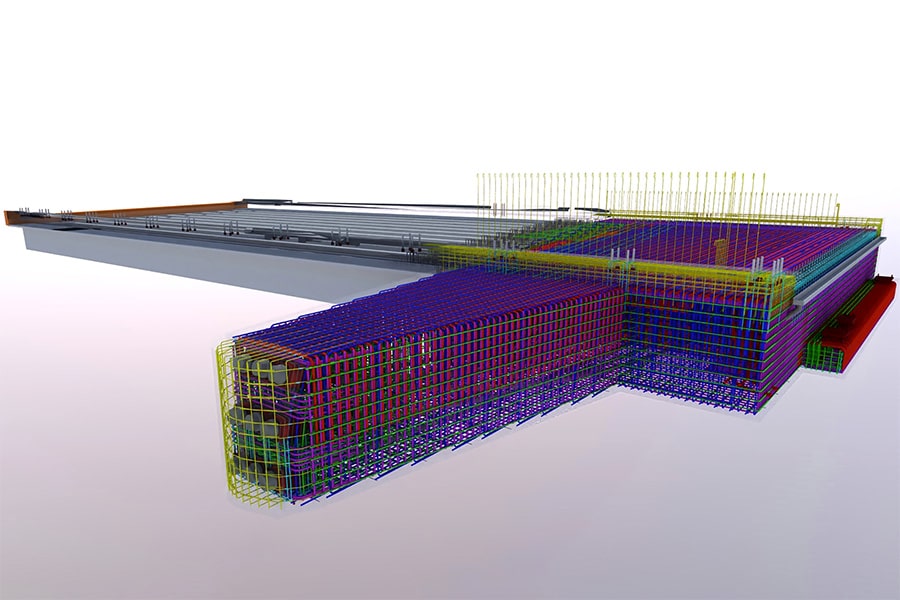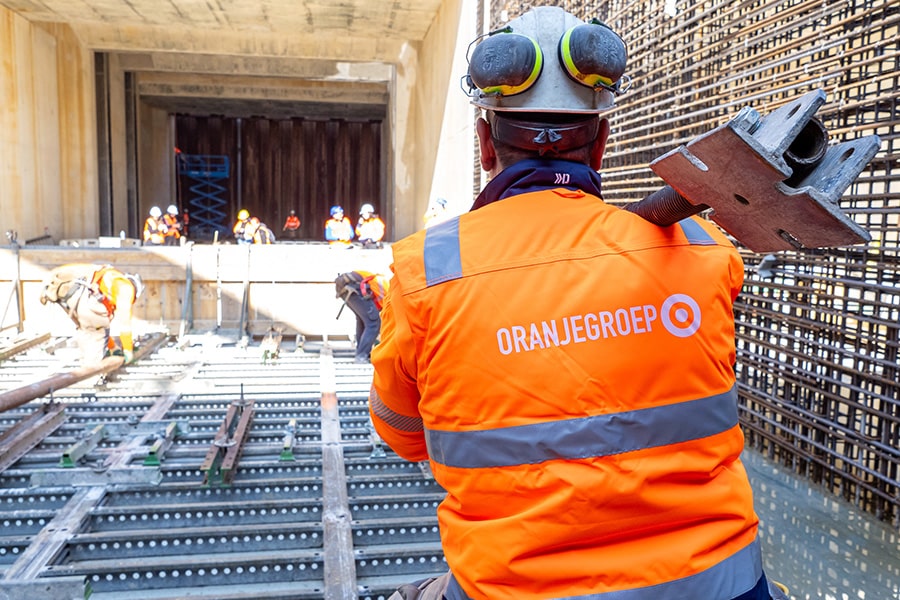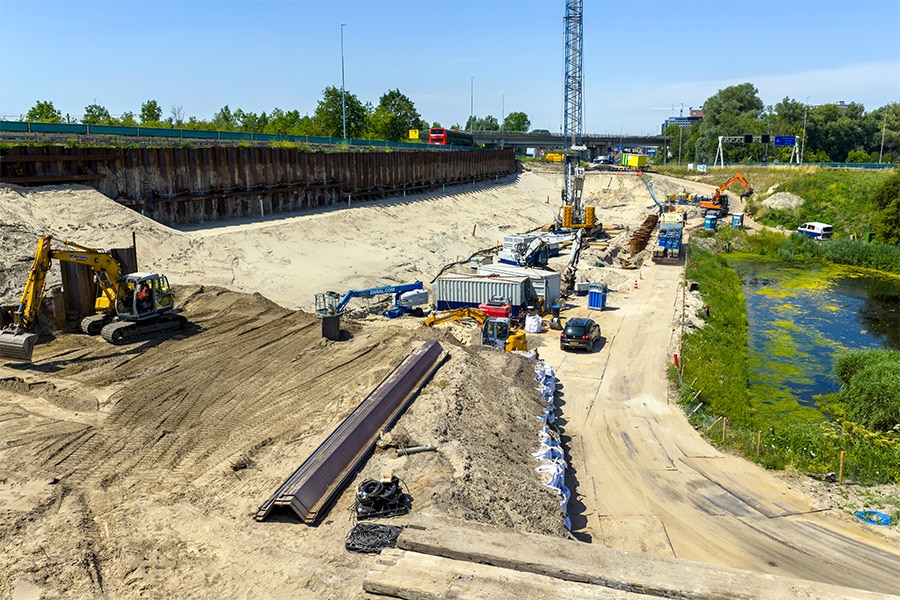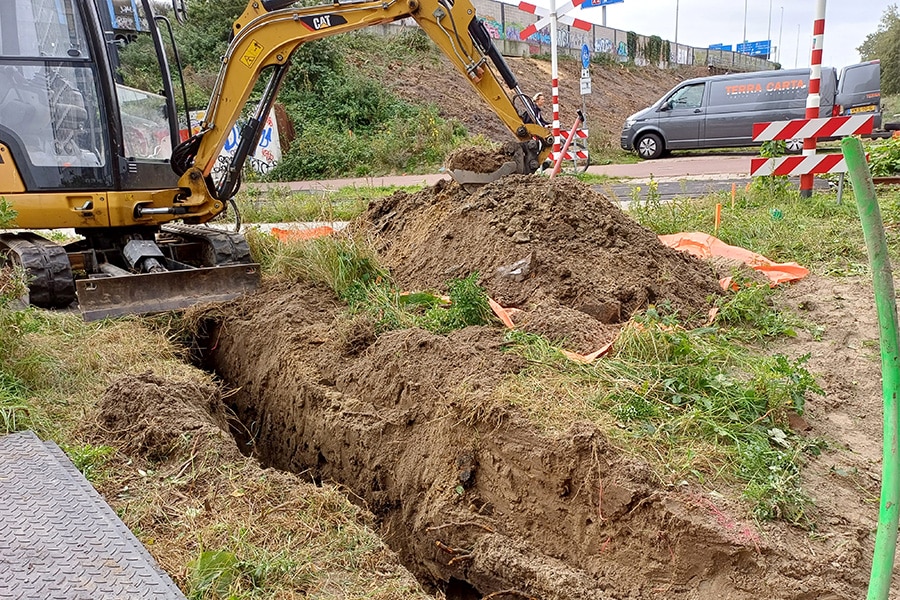
Smart steel solutions for a sustainable future
ArcelorMittal Projects' stand at InfraTech 2025 is all about smart steel solutions. The producer of steel pipes and sheet piles will show the necessary innovations to the general public and demonstrate how they contribute to reducing environmental impact. An interview with Technical Sales Engineer Roel Bijlard on how ArcelorMittal is transforming the world of steel to smarter and carbon-free.
ArcelorMittal Group is committed to the Paris Climate Agreement. "Steel production will have to be completely carbon-free by 2050 with an interim target of 35% reduction in Europe by 2030," says Roel. To that end, a good number of steps are being taken. "There are traditionally two ways to produce steel: from ore in a blast furnace or with scrap in an electric arc furnace. The latter has a lower environmental impact, including much lower CO2 emissions. However, there is not enough scrap available to completely abandon production from iron ore and meet all demand for steel. For this reason, we are busy converting production in our European plants from the blast furnace process to a natural gas-fired DRI process. This is an essential intermediate step towards a completely carbon-free DRI production process based on green hydrogen, which replaces coal in reducing iron ore to pig iron."

ArcelorMittal steel sheet piles are already produced from scrap metal. For this, the EcoSheetPile™ Plus variant is also available for the lowest environmental impact of new sheet piles. By producing from approximately 100% scrap in an electric arc furnace on green electricity, a very low environmental impact is achieved including 359 kg CO2eq. per ton and an associated EQI value of €44 per ton of sheet piling for the production phase. These values are demonstrated in the available EPD EcoSheetPile™ Plus. These values are a huge gain compared to a sheet pile wall produced from iron ore in a blast furnace, which (according to the National Environmental Database - NMD) has emissions of 2,120 kg CO2eq./ton and an associated MKI value of €275 per ton for the production phase.
Reduce, Reuse, Recycle - Coming full circle
Optimizing the production process is just one of the many steps ArcelorMittal is taking towards carbon-free production. For many decades, successful efforts have been made to optimize steel products. "Partly because of the increased steel quality, we are able to design much more economically. In other words, less steel is needed for a profile to perform the same function," Roel clarifies. "In thirty years, the profiles required have been reduced in weight by more than 30%. We are also putting more and more effort into reusing steel elements, including sheet pile walls. They are often used for temporary applications. By pulling them out of the ground at the end of a project, they can often be reused in a subsequent project. The associated environmental benefits are significant. But at some point, even the reused ones reach the end of their useful life. Then they go into our electric arc furnace and we complete the circle again: from sheet piling to scrap to sheet piling. We can't make it any more circular."

SmartSheetPile
To best determine the behavior and (residual) life of a sheet pile structure, ArcelorMittal has developed the SmartSheetPile. "It is a concept that uses sensors to image all kinds of parameters to extract more information from the sheet wall during installation and during its lifetime," Roel explains. "During installation, we can use sensors to check that no slot openings have occurred. During service life, you can think about monitoring actual deformations with inclinometers, strain sensors to monitor loads, or sensors that record vibrations that can be used to measure the effect of an unintended load. In addition, we supply sensors that register the degree of corrosion. So that you can take appropriate measures in time, should the structure experience more corrosion than expected. On the other hand, the lifespan of a construction can actually be extended, should the corrosion process prove more favorable. So the SmartSheetPile concept is versatile and constantly evolving. Data are monitored in real time and sent to an online dashboard, where we can build in all kinds of automatic alerts for undesirable situations." Over the past two years, successful pile driving trials have been conducted to test the robustness of the sensors during installation. The first pilot project was also carried out in Luxembourg, where 125 sensors were installed in a new quay wall for the port of Mertert.
The goal of the SmartSheetPile concept, according to Roel, is to get an even better grip on the behavior and performance of steel. "It can lead to the development of new models and new calculation methodologies, life extension and ultimately optimizations of steel use. With the SmartSheetPile, we provide insight into the extent to which calculation methodologies correspond to what actually happens. Also, maintenance can be planned better and preventively, resulting in less downtime." At InfraTech, visitors at ArcelorMittal Projects' stand 1.302 can experience the SmartSheetPile concept for themselves using a demonstration model of the smart sheet pile wall.
Heeft u vragen over dit artikel, project of product?
Neem dan rechtstreeks contact op met ArcelorMittal Projects Europe B.V..
 Contact opnemen
Contact opnemen




